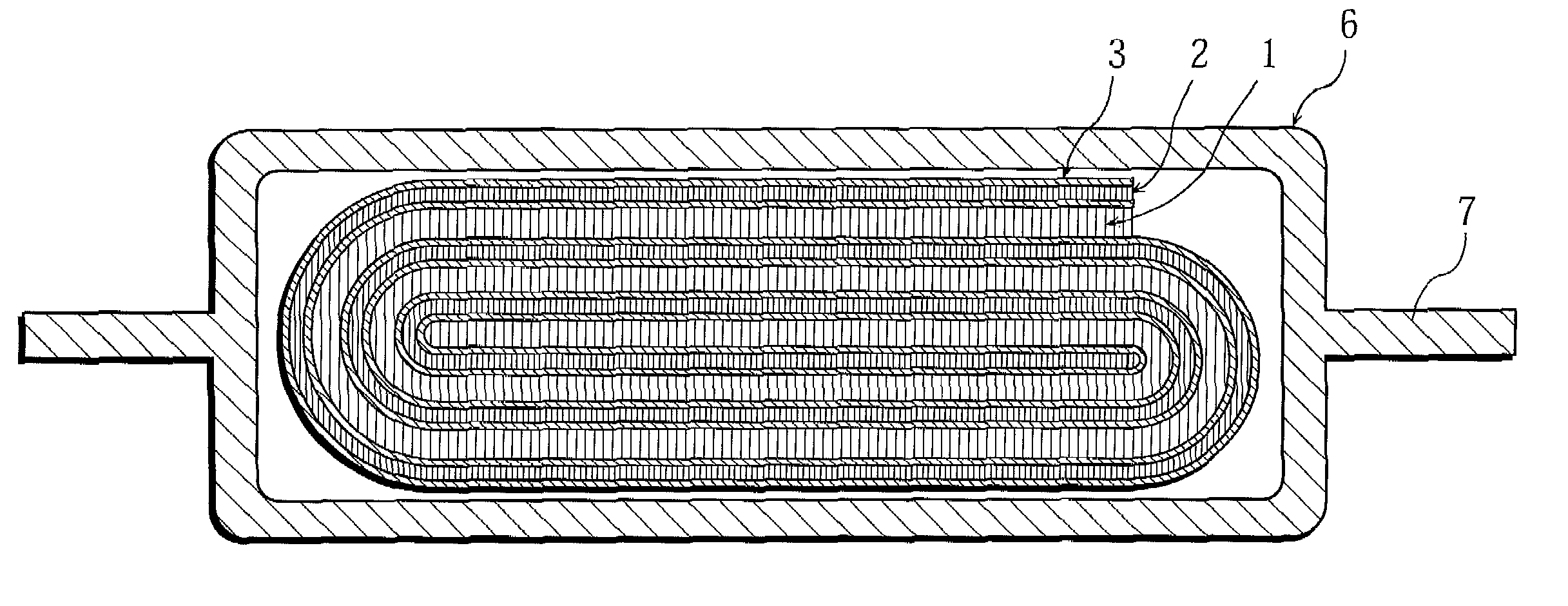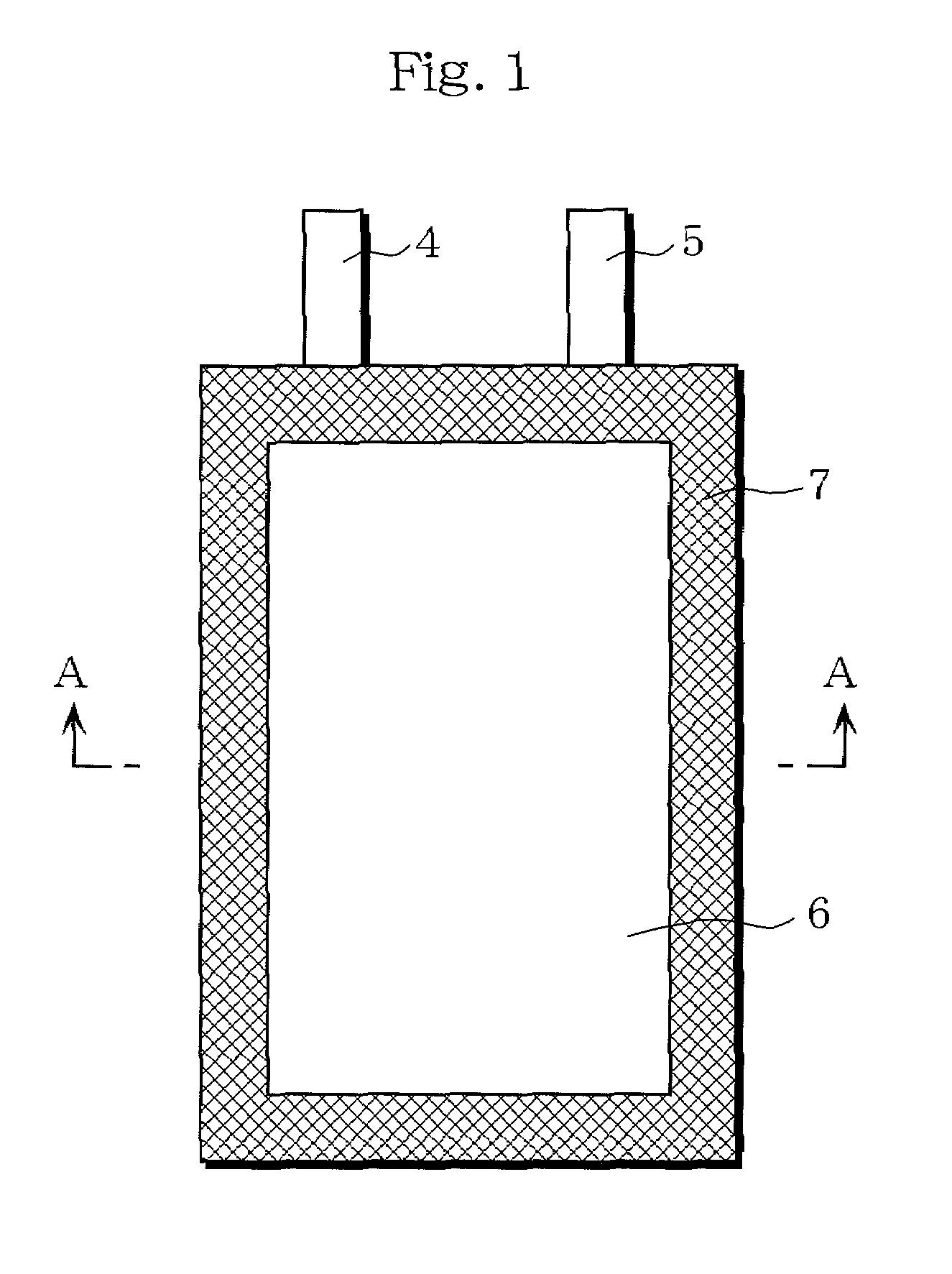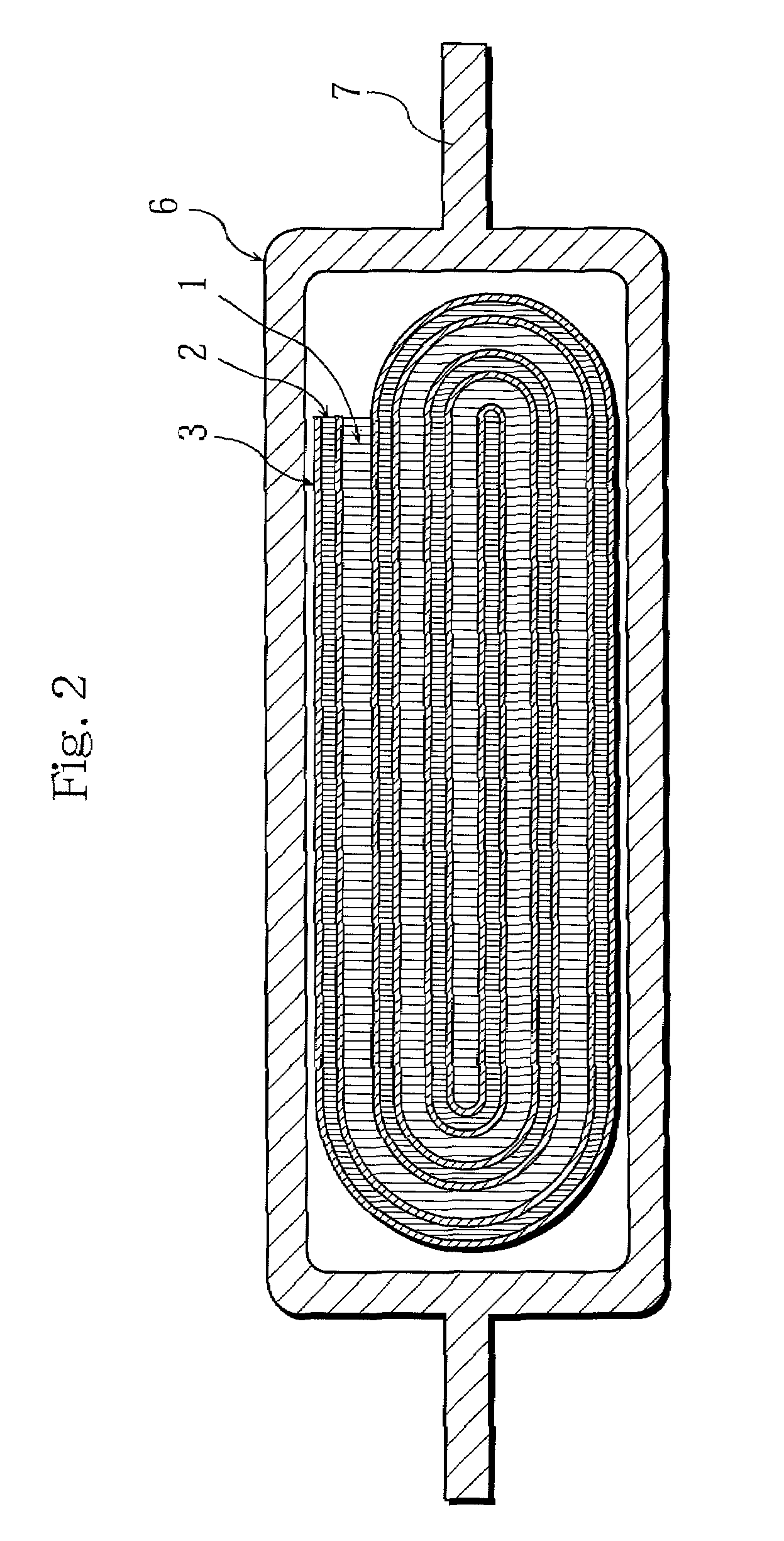Lithium secondary battery and method of manufacturing the same
a secondary battery and lithium battery technology, applied in the field of lithium secondary batteries, can solve the problems of 372 mab, obstacle to achieving a higher battery capacity, and the upper limit of battery capacity is limited, and achieve the effects of high reaction uniformity in particle reaction, large strain, and improved particle fracture ra
- Summary
- Abstract
- Description
- Claims
- Application Information
AI Technical Summary
Benefits of technology
Problems solved by technology
Method used
Image
Examples
example 4
[0113]A battery was fabricated in the same manner as described in Example 1 above, except that the polycrystalline silicon particles used had a crystallite size of 58 nm, an average particle size of 0.3 μm, and a particle size distribution in which D10 was 0.1 μm, D50 was 0.3 μm and D90 was 0.9 μm.
[0114]The battery fabricated in this manner is hereinafter referred to as Battery A4 of the invention.
experiment 3
(Experiment 3)
[0140]The physical properties (imidization ratio and glass transition temperature) of the binder resin A were measured.
[0141]For the measurement, the precursor of the polyimide resin A, polyamic acid varnish, alone was dried in the air at 120° C., as in the conditions for preparing the negative electrode, and was thereafter heat-treated under an argon atmosphere at 400° C. for 10 hours, to thereby prepare a block of binder resin A.
[0142]The imidization ratio was determined by IR spectroscopy, and it was found that no peak due to acid amide sites was observed with the block of the heat-treated binder resin A and that the imidization ratio was 100%.
[0143]The glass transition temperature as determined by a DSC (differential scanning calorimetry) measurement was 285° C.
Second Group of Examples
[0144]In the Second Group of Examples, a study was conducted about how the positive / negative electrode theoretical electrical capacity ratio affects the battery performance.
Example 1
[...
examples 2 to 10
[0165]Batteries were fabricated in the same manner as described in Example 1 above, except that the average particle sizes and the amounts (mass ratios relative to the negative electrode active material particles) of the graphite powders added were as set forth in Table 4 blow.
[0166]The batteries fabricated in these manners are hereinafter referred to as Batteries D2 to D10 of the invention, respectively.
(Experiment)
[0167]The just-mentioned Batteries D1 to D10 of the invention were charged and discharged under the same conditions as described in the foregoing experiment of the First Group of Examples, to determine the cycle life for each battery. The results are shown in Table 4 below. Table 4 also shows the cycle life of Battery A1 of the invention.
[0168]
TABLE 4Negative electrode conductive agentAverage particleAmount addedCycle lifeBatterysize (μm)(mass %)(times)D113433D23.5502D35494D410489D515477D620441D73.51448D810463D920456D1025395A1——450
[0169]The results shown in Table 4 clear...
PUM
| Property | Measurement | Unit |
|---|---|---|
| crystallite size | aaaaa | aaaaa |
| particle size | aaaaa | aaaaa |
| particle size distribution | aaaaa | aaaaa |
Abstract
Description
Claims
Application Information
 Login to View More
Login to View More - R&D
- Intellectual Property
- Life Sciences
- Materials
- Tech Scout
- Unparalleled Data Quality
- Higher Quality Content
- 60% Fewer Hallucinations
Browse by: Latest US Patents, China's latest patents, Technical Efficacy Thesaurus, Application Domain, Technology Topic, Popular Technical Reports.
© 2025 PatSnap. All rights reserved.Legal|Privacy policy|Modern Slavery Act Transparency Statement|Sitemap|About US| Contact US: help@patsnap.com



